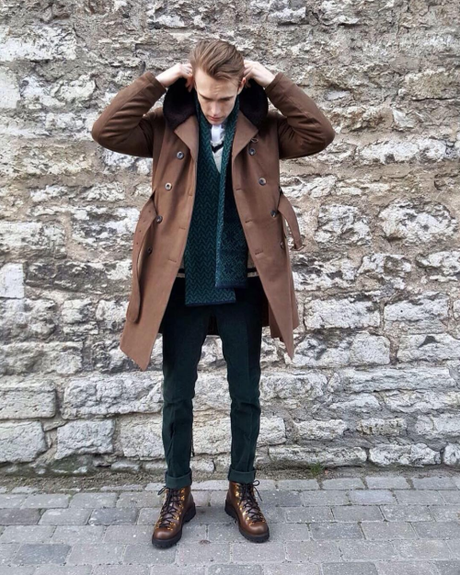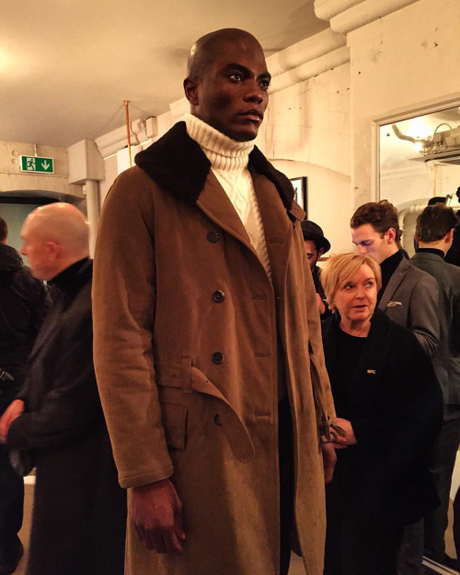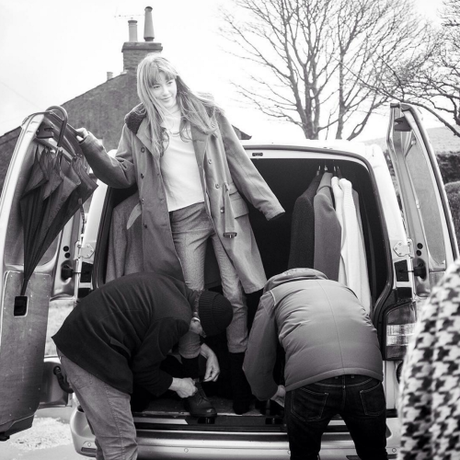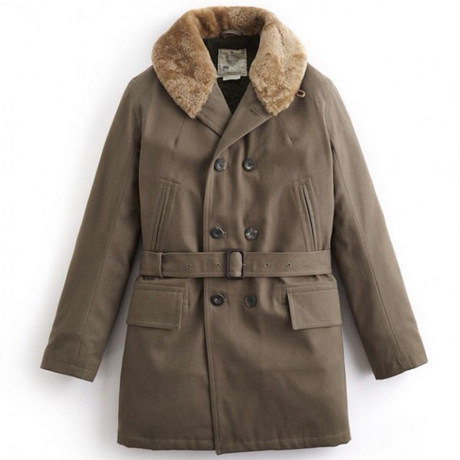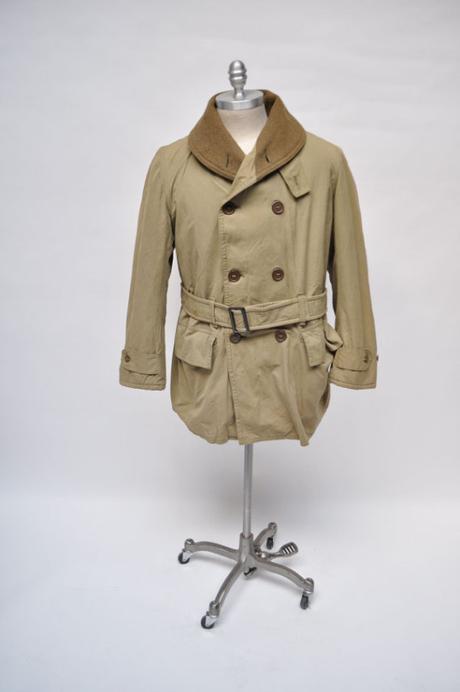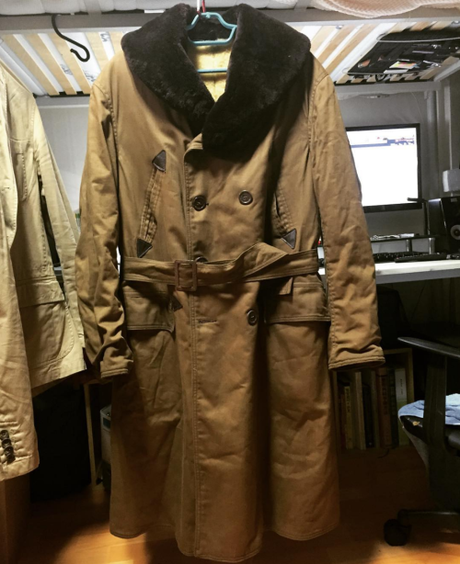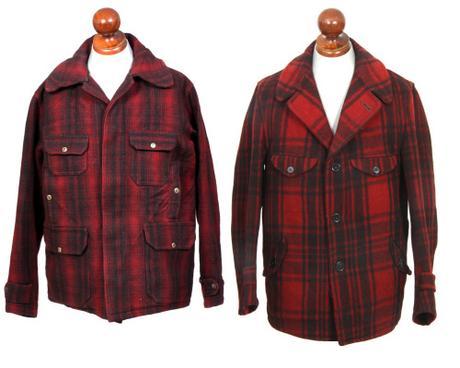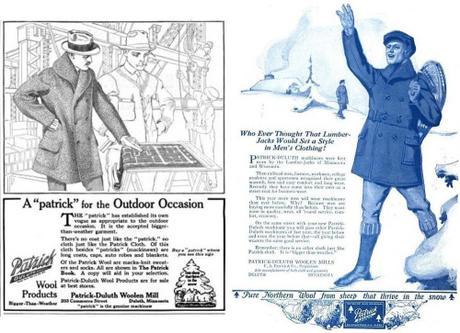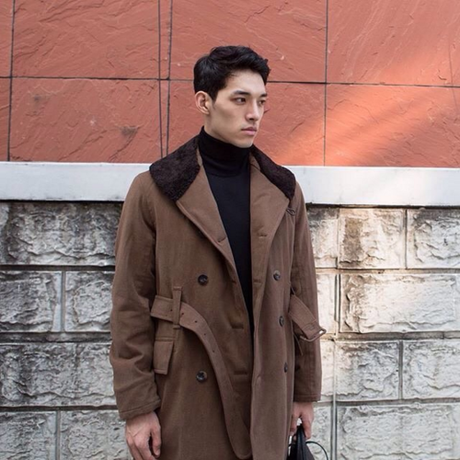
It’s amazing how much of our wardrobe comes from the military. Every other person you see nowadays is dressed to kill. Men in cafes wearing Melton wool pea coats and heavy leather bombers; women in Army green field jackets; and businessmen with large, cotton gabardine trench coats thrown over their suits. Even seemingly innocuous items have their roots in war. Chinos, for example, were originally worn by British and French servicemen in the 19th century. Today, they’re just standard issue for cubicle farmers.
One military style I’ve been into lately is the jeep coat – a short, double breasted design that American soldiers wore during the Second World War. Some don’t look like they’re much more than Army-issued versions of naval pea coats, but I favor the more dramatic styles with shawl collars (see an example above).
Since fashion is all about repurposing design, you have to go back to the turn of the century to really understand jeep coats. Back then, fur traders and loggers in the Pacific Northwest would wear blanket coats – called so because they were made from the garishly patterned, brightly colored blankets. The coats were double breasted in order to keep the wearer warm, but also cut short to allow for easy movement These were work clothes, after all, even if the style would later spread throughout the US – first as souvenir gifts, then as fashion items, and finally as military garb.


Here are two examples of blanket coats. The one on the left is from Pendleton; the one on the right is from the Hudson’s Bay Company. Around the same time that these coats were sold, some people were also making mackinaw coats – a similar style that was cut and sewn from mackinaw cloth (swatches of which you can see immediately above).
Mackinaw cloth is a heavy, dense, and coarse fabric, typically weighing in around 40 ounces per meter (for comparison, modern overcoats rarely break the 30 ounce mark). Originally, the fabric was woven by Norwegian immigrants in Canada. They would spin yarn from northern sheepswool, weave it into a thick fabric, and then dance on it with wooden shoes, water and soap (often accompanied by music and celebration). This would shrink the fabric down considerably, making it denser, more durable, and warmer wearing. Later, when the fabric was commercialized, mills would mimic this felting process with machines.

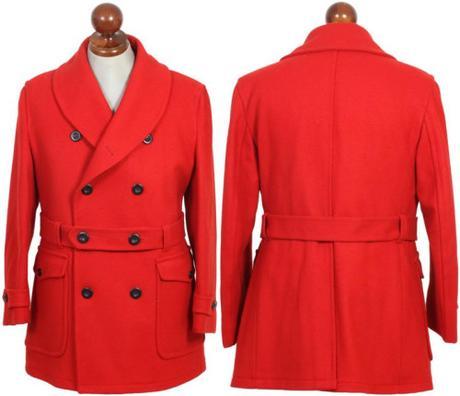
Early mackinaw coats were made and sold by the Mackinaw Fur Company, headquartered in Fort Mackinac, but it wasn’t until Patrick-Duluth Woolen Mills came along that the style spread. They pulled mackinaw coats out of Western Canada’s lumber camps and fur trading centers, and introduced them to a broader audience.
Patrick-Duluth’s design looked like what you see above. They changed up their mackinaws with a belted waist and what they called a “nansen collar” (what we understand today to be a shawl collar). Since these weren’t really meant for logging or hunting, they were made from a lighter weight fabric. Something closer to 24 or 32oz cloth, rather than the original 40.
They kept the bright colors, however, which is partly why the style became popular in college towns. And since young students and athletes back then set many of the day’s fashion trends, mackinaw coats eventually found their way onto the racks of gentlemen clothiers, such as Brooks Brothers, Rogers Peet, and Abercrombie & Fitch. Then, as now, workwear traded on its utilitarian value and democratic associations. The idea that you too could be as rugged, hard working, and honest as the laborers who originally wore these clothes – all you had to do was purchase this coat.
Like any trend, mackinaws eventually faded away. Too many new brands jumped on the scene, Patrick-Duluth couldn’t keep up with orders, and some of the more affordable designs were made from questionable cloths. Seeing the end of the craze, Patrick-Duluth rebranded their mackinaws once again. Their new coats were called “The Patrick” and were sold with the tag line “bigger than the weather.” Some of these were belted, some were not. Either way, these were mostly marketed to outdoorsmen, hunters, and farmers, who proved to be more faithful customers than hip college students.


That’s where the jeep coat comes in – the design worn by American servicemen during WWII. You can see all the variations above: the original blanket coat design, the more popular Patrick-Duluth mackinaw, and the later revised “Patrick.” All of these have the same elements that made the coat originally popular with fur traders, lumberjacks, and outdoorsmen, but were made from even more utilitarian cloths. Rather than bright colors, which would probably get you shot on the battlefield, these were cut and sewn from heavy cotton twills and kersey wools, typically in drab olive colors.
I like the idea of wearing the originals in a traditional, vintage-inspired workwear way (e.g. heavy leather boots and a pair of beat-up jeans). The look has all the classic, rugged sensibility that I think makes the stuff you see at Bryceland’s great (as well as Ethan Newton’s personal style).
At the same time, I also like the slightly updated designs. Private White VC has a tremendous one this season with a longer body, which not only gives you better coverage, but also a bit of dramatic flair. Naissance also has an oversized jeep coat with a mouton lining and shearling collar. I love the idea of wearing these in a “light 1970s” way. Think: more Marvin Gaye in a chunky turtleneck sweater and some slacks, rather than the kind of revisited ‘70s flamboyance at Gucci. In this sense, I think the jeep coat looks more contemporary, rather than strictly workwear.
Hoping I can find one by the end of this year without breaking the bank. Will wear it even if I’ve never fought anything but my own impulses.




